It’s that time of year when environmental allergies are at their peak. Is your dog suffering? Dog allergy symptoms could arise without you even knowing the reason. Pollen, grass, fleas, weeds, and mold could all cause reactions for your pup. So, it’s important to pay attention to your dog’s behaviors as the seasons change.
Here are 11 signs that your dog may be allergic to all that springtime beauty. If your dog has any of these signs, talk with your vet and consider adding an Omega-3 fish oil or canine allergy supplement to their diet.
#1 – Itching
Is your dog constantly scratching? This is a tell-tale sign of allergies. Especially if it seems to get worse after you have been outside. Too much itching could lead to other allergy symptoms, such as hair loss and irritated skin. Yet, if your dog itches year-round, then seasonal allergies might not be to blame. Instead, they might be allergic to an ingredient in their food.
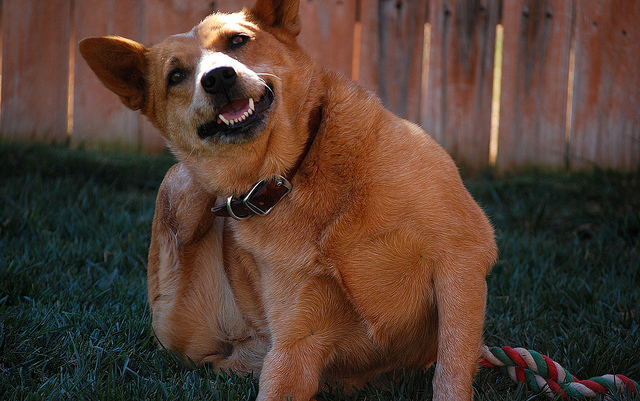
#2 – Red, Irritated Skin
Like humans, dogs can break out in rashes and hives when exposed to something they’re allergic to. Look on their belly and feet, particularly between the toes. These are the parts of their body that touch things like grass and pollen the most. Their ears could also get inflamed easily.
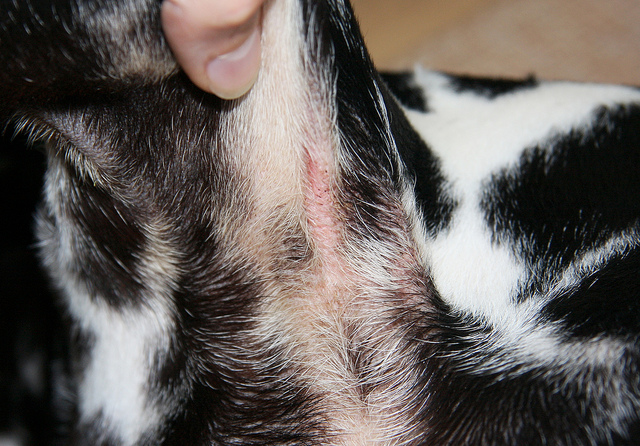
#3 – Obsessive Licking
If your dog is constantly licking, then something in their environment may be bothering them. Again, you should pay close attention to their belly and paws. It’s normal for your dog to lick their paws now and then. Yet, increased licking could be a dog allergy symptom.
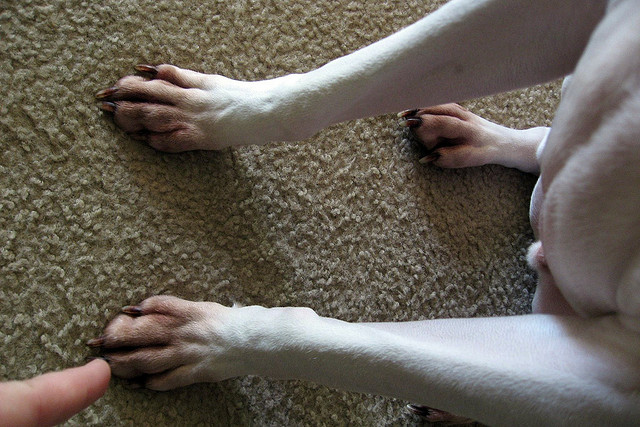
#4 – Rubbing Face on Things
A dog rubbing their face is sometimes related to excessive licking. Oftentimes, rubbing will be on the carpet, pillows, or couch. Some dogs will try to rub their entire body across a surface to ease the itchiness caused by an allergy. This rubbing is due to histamines, which are chemicals in the immune system triggered by allergies.
Related: Why is Colostrum Becoming So Popular for Dogs with Allergies?

#5 – Hair Loss
If the allergy isn’t treated and your dog keeps getting exposed to the allergen, they can suffer hair loss. This could also occur in the form of excessive shedding. Scratching is often the cause of hair loss, and it could cause flaking skin and dandruff too. Your vet might be able to prescribe medications to help ease your dog’s discomfort.
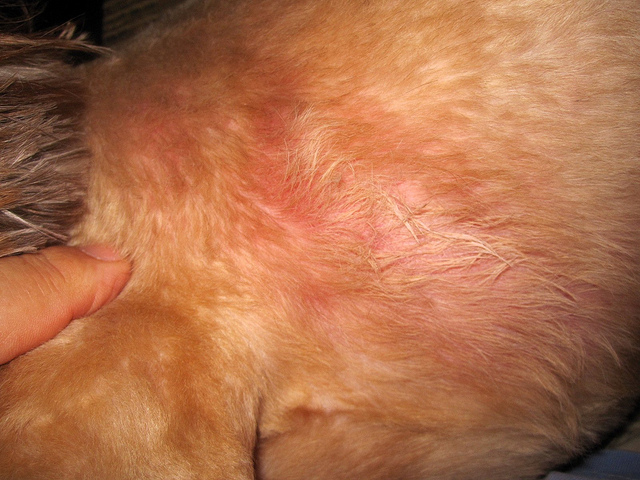
#6 – Hot Spots
Hot spots are another result of continued exposure to an allergen without medication. It’s a skin disorder that’s often caused by allergies and other reactions. The skin becomes so inflamed that it turns red and will even bleed. There could also be hair loss.
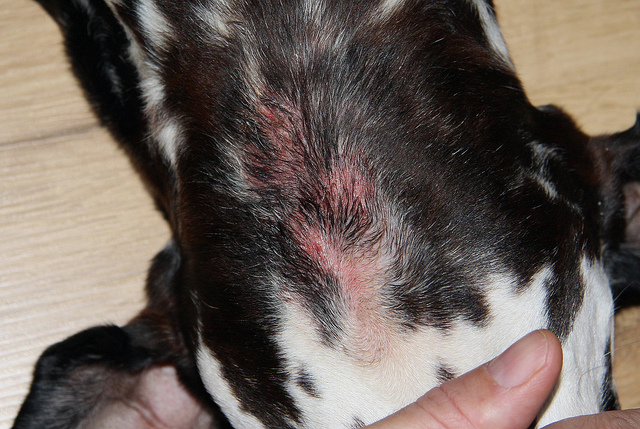
#7 – Red, Stinky Ears
If the allergy is affecting your dog’s ears, then there will be an odor. This could lead to an ear infection, especially for dogs with floppy ears. Their ears might look red and waxy or your dog might shake more often. Make sure you have your vet check out your dog’s ears if they start looking or smelling unusual.
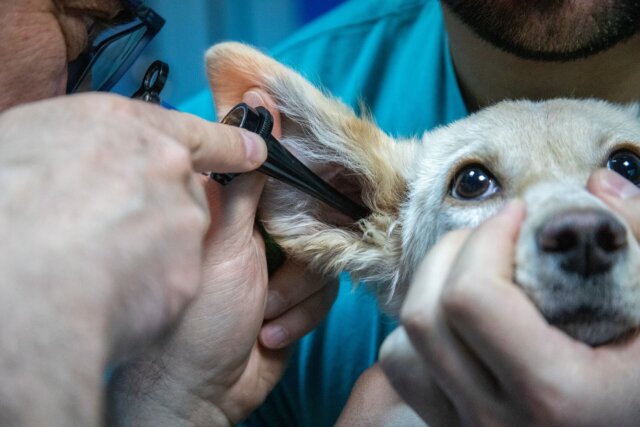
#8 – Shaking of Head
If your dog’s ears are being bothered by allergies, your dog will shake their head often, due to irritation. This is another sign of an ear infection. They might also not want you to touch their head, especially near the uncomfortable area. These dog allergy symptoms seem minor, but you need to keep a close eye on them.

#9 – Redness of Skin
Allergies will also give dogs red skin near their mouth, chin, and paws. In some circumstances, their anus will also become red and inflamed. If they don’t stop itching and scratching, other parts of their body might appear red too. Bathing them with a shampoo for skin conditions might help soothe this redness.
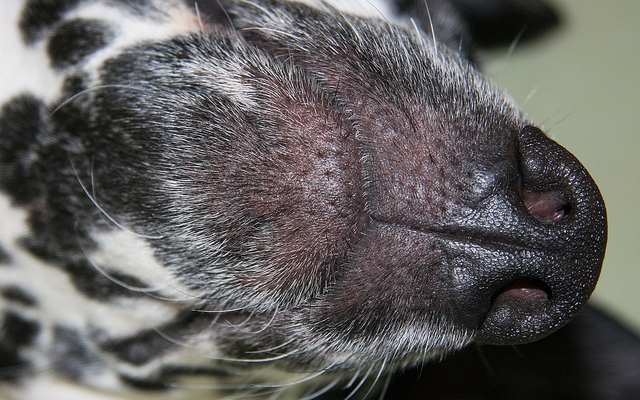
#10 – Puffy Eyes
Dogs with allergies often get puffy, red eyes like humans do. Their eyes might water or feel itchy. This could also come with runny noses and excessive sneezing. If it’s linked to seasonal allergies, it will usually happen after you take your dog outside.
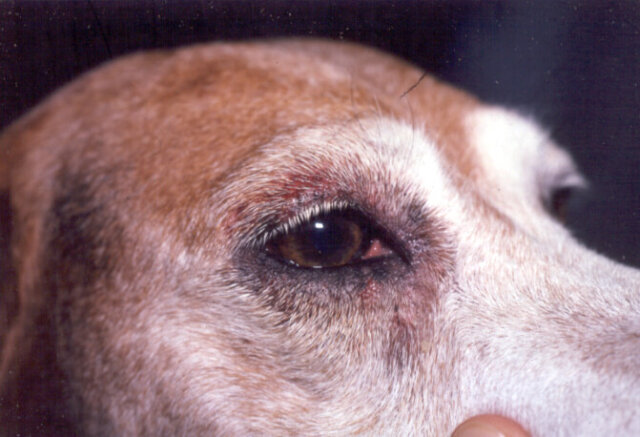
#11 – Respiratory Issues
Coughing, wheezing, sneezing, and difficulties breathing could be symptoms of a seasonal allergy. Dogs with flat faces are the most likely to get these reactions. It’s not as common as the above dog allergy symptoms, but it’s important to seek help if your dog has major respiratory issues. After all, there’s a chance that these problems could be linked to something more serious.

If your dog is experiencing seasonal allergies, consider adding a supplement with ingredients like Omega-3, colostrum, Reishi mushrooms, or quercetin to their diet.
If you suspect that your dog has seasonal allergies, you should consult your vet as soon as you can. They can help confirm that allergies are the problem. Plus, they should be able to provide you with tips on how to prevent your dog’s allergy symptoms. It’s always better to be safe than sorry when it comes to your dog’s health.
Featured Image: @DonnieRayJones via Flickr

 Toledo, United States.
Toledo, United States.
